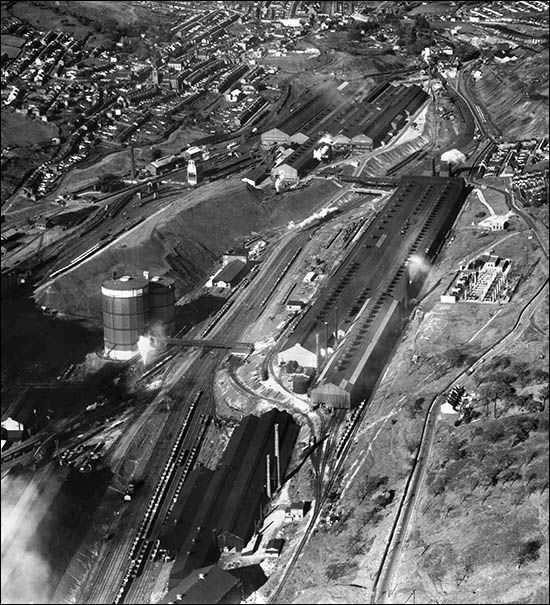Site of Ebbw Vale steelworks
The closure of Ebbw Vale steelworks in 2002 sparked a major regeneration initiative, which brought new buildings and uses to the site.
 The Heads of the Valleys became one of the world’s biggest iron-producing regions during the Industrial Revolution, thanks to plentiful deposits of iron ore and coal. The economic depression after the First World War hit the region hard, and Ebbw Vale steelworks closed in 1929.
The Heads of the Valleys became one of the world’s biggest iron-producing regions during the Industrial Revolution, thanks to plentiful deposits of iron ore and coal. The economic depression after the First World War hit the region hard, and Ebbw Vale steelworks closed in 1929.
It reopened in 1938, under new ownership and boasting the first steel-rolling strip mill outside the USA, as you can read on our page about the roll stock displayed at the north end of the steelworks site. The 1948 aerial photo, courtesy of the Welsh Government, shows how the valley floor was occupied by the works and associated railways and roads.
The works passed into government ownership in 1950. Imported iron ore was carried up the valley on heavy trains until British Steel reorganised its South Wales plants in the mid-1970s. Port Talbot and Llanwern, close to ports, continued to make steel while Ebbw Vale specialised in rolling steel and applying coatings.
The works was back in private ownership when closure, with the loss of 780 jobs, was announced in 2001. The task of clearing the 21-hectare site included demolishing buildings, removing reinforced concrete floors and stabilising entrances to old mines. The ground needed extensive cleaning to remove pollutants.
A masterplan was drawn up to coordinate redevelopment. New facilities included a hospital, tertiary college, leisure centre and the new home of Gwent Archives. A new railway opened in 2015 to connect Ebbw Vale Town station to the line to Cardiff and Newport.
The former general offices are now home to a volunteer-run museum packed with exhibits and information about the local iron and steel industries.
Postcode: NP23 6GL View Location Map
Website of the Ebbw Vale Works Museum

